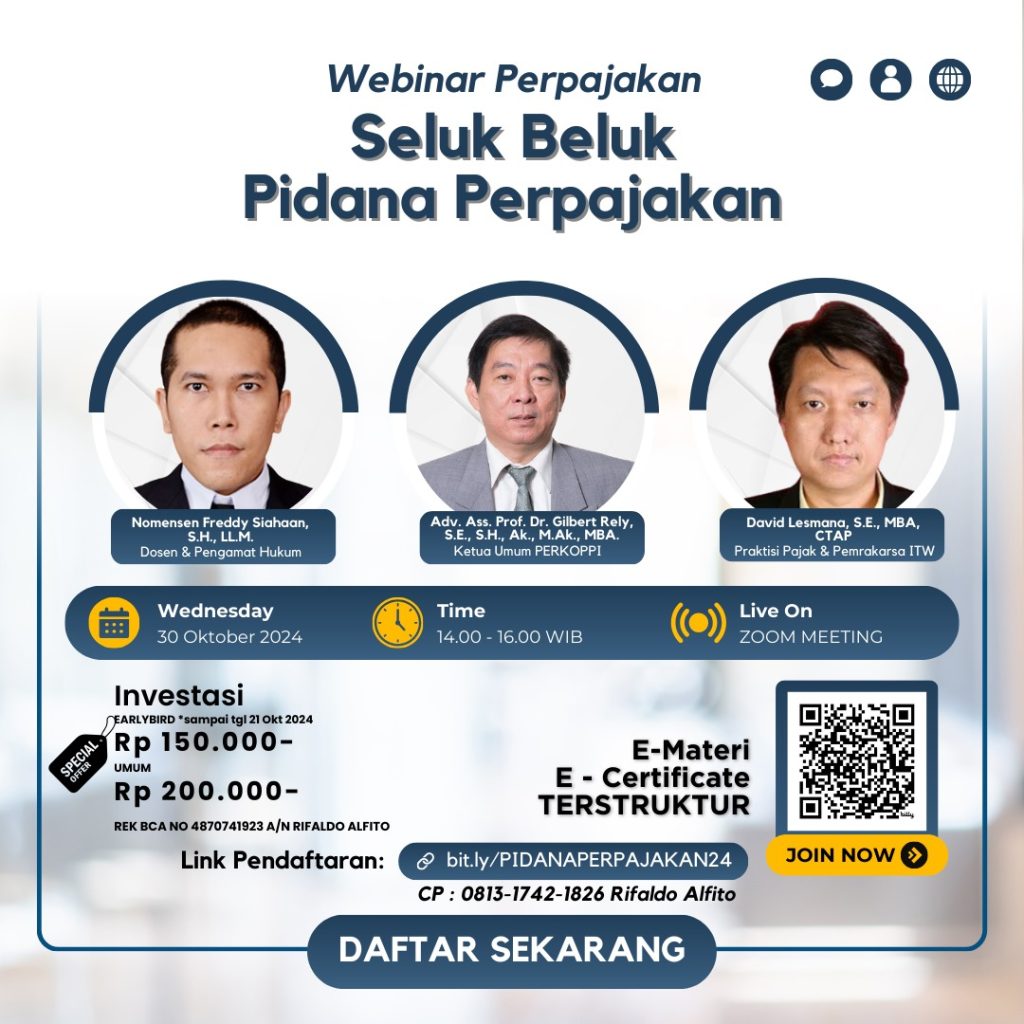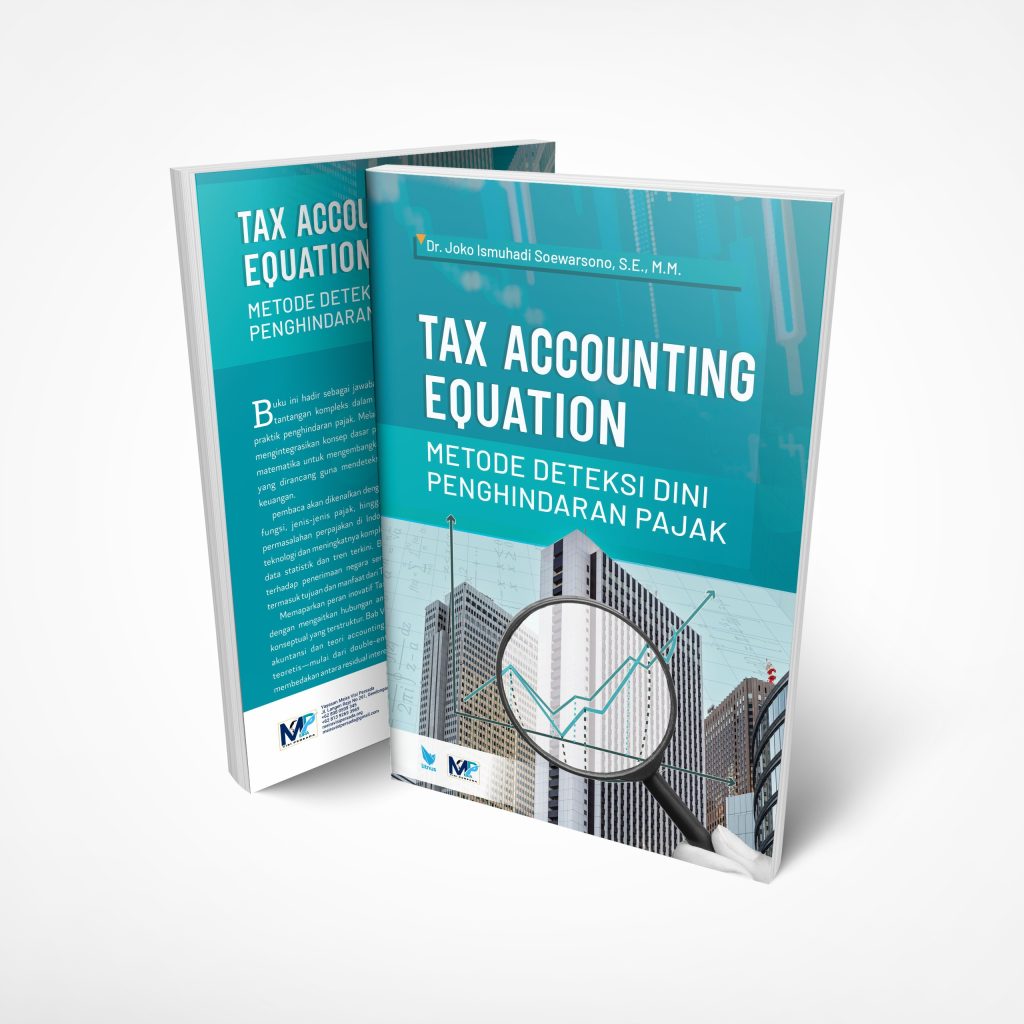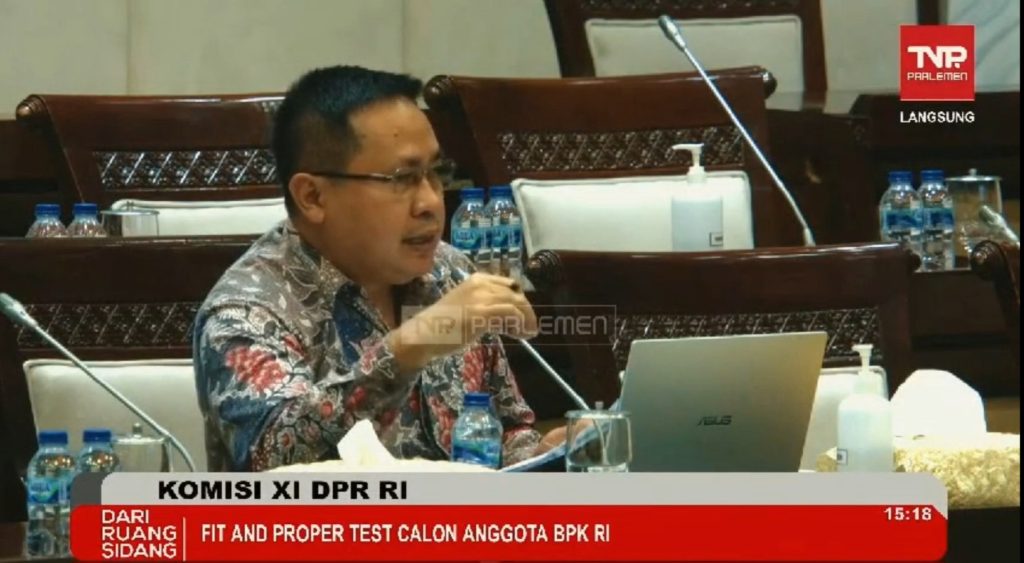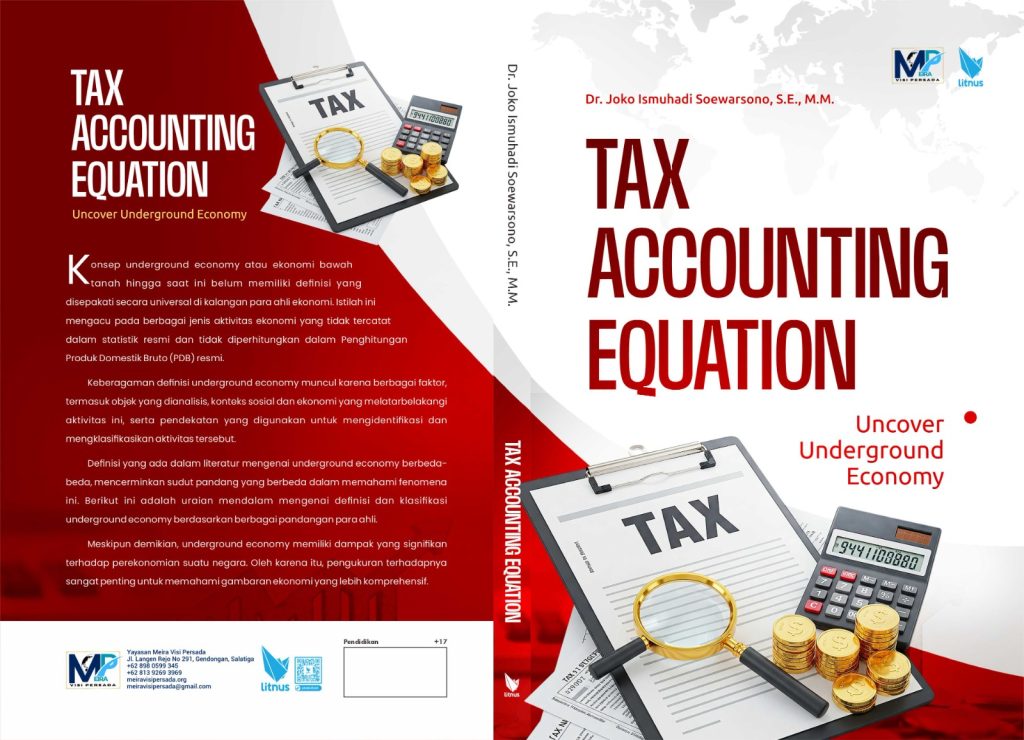
Analysis of the Derivation of Dr. Soewarsono’s Tax Accounting Equation
- Ekonomi
Thursday, 08 May 2025 04:43 WIB
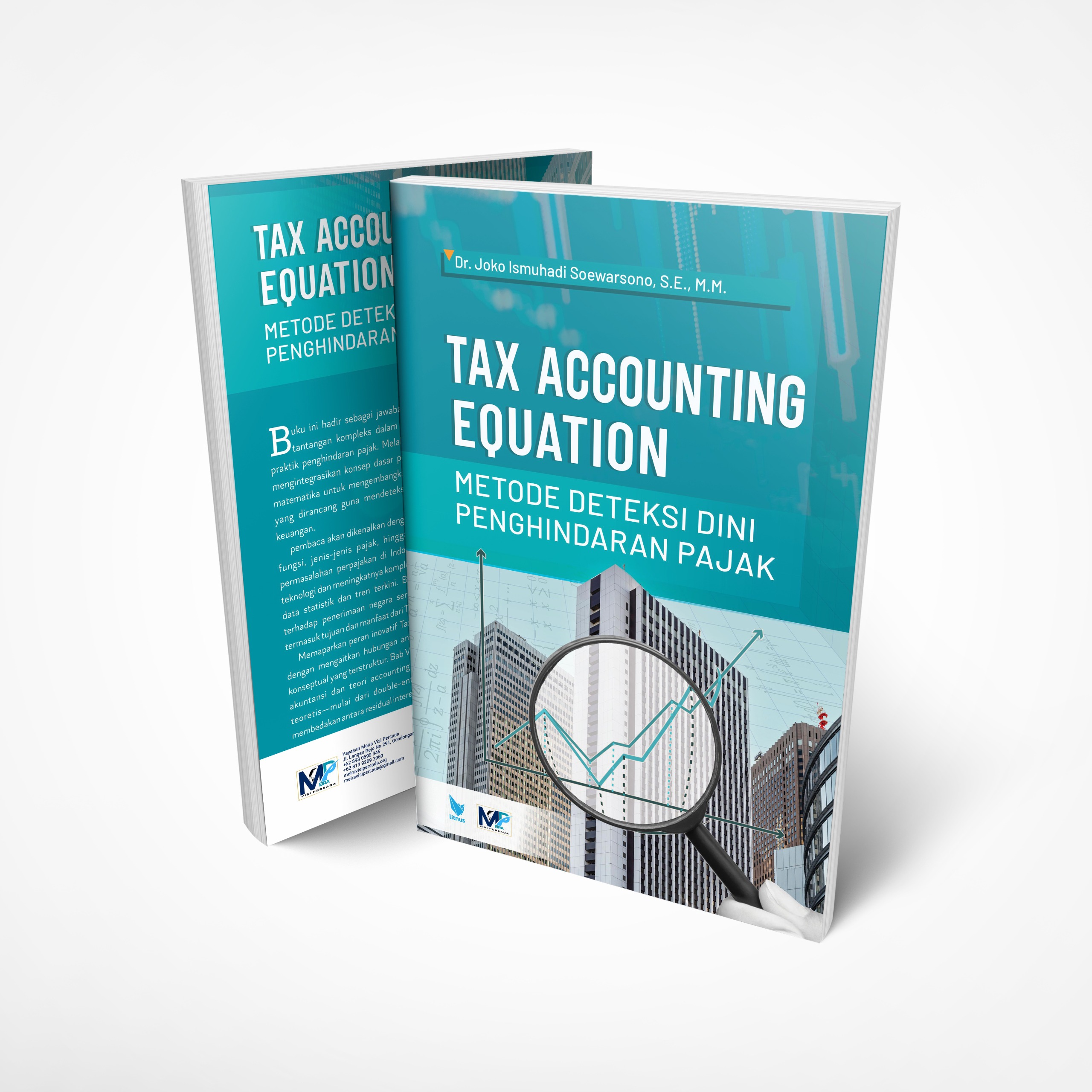
Jakarta, fiskusnews.com:
The fundamental accounting equation, Assets = Liabilities + Equity, serves as the cornerstone of modern accounting. This equation represents the intrinsic balance between a company’s economic resources (assets) and the claims against those resources by creditors (liabilities) and owners (equity). Its significance is underscored by its role as the foundation of the double-entry bookkeeping system, a methodology where every financial transaction is recorded with dual entries to ensure the continued equilibrium of the equation. The basic accounting equation can also be presented in rearranged forms to highlight different aspects of a company’s financial structure. Beyond the basic structure, the accounting equation can be expanded to incorporate elements from the income statement, such as revenues and expenses, providing a more comprehensive understanding of how a company’s operational performance influences its financial position. Notably, Dr. Joko Ismuhadi Soewarsono developed a Tax Accounting Equation (TAE) as an analytical instrument within the realm of tax accounting. This report aims to meticulously analyze the derivations presented, which seek to connect these fundamental accounting principles with the specific framework of Dr. Soewarsono’s TAE.
The initial step in the derivation involves the introduction of revenue (R), expenses (E), and a new variable, deduction (D), into a simplified accounting equation. Starting with A = L + e, the equation is expanded to A = L + e + R – E – D. This expansion effectively integrates key components of the income statement into the balance sheet framework. The inclusion of revenue, expenses, and deductions directly reflects the impact of a business’s operational activities on its fundamental accounting equation. Revenue generated by a company typically increases its owner’s equity or retained earnings, while expenses incurred in the process of generating that revenue, along with any allowable deductions, serve to decrease it. This expansion acknowledges that a business is not a static entity and that its financial position is continuously evolving as a result of its performance over time.
The subsequent step involves an algebraic rearrangement of the expanded equation: A + D + E = L + e + R. This rearrangement is a mathematically valid manipulation of the previous equation, where deductions (D) and expenses (E) have been transposed to the left-hand side. While this rearrangement does not introduce any new economic concepts or variables, it offers an alternative perspective on the relationships between the various accounting elements. This particular arrangement groups items that typically carry debit balances in a double-entry accounting system (assets, deductions, expenses) on one side of the equation, while items that usually have credit balances (liabilities, the equity component ‘e’, revenue) are grouped on the other side. This hints at the underlying principles of double-entry accounting, where the total debits must always equal the total credits for every transaction. The placement of ‘D’ on the debit side suggests its potential role in reducing revenue or increasing expenses from a tax perspective.
The derivation then introduces two conditions: e = 0 and D = 0. These conditions are imposed to explore the simplified forms of the expanded equations under specific assumptions. Applying these conditions to the first expanded equation, A = L + e + R – E – D, results in the substitution of zero for both ‘e’ and ‘D’, yielding A = L + 0 + R – E – 0, which simplifies to A = L + R – E. This equation can be further rearranged to R – E = A – L, which the user correctly identifies as Dr. Soewarsono’s Tax Accounting Equation. This simplification under the stated conditions effectively isolates the core components of a company’s profitability (revenue minus expenses) and establishes their relationship with the balance sheet in terms of net assets (assets minus liabilities), which in the basic accounting equation represents equity. This highlights how a more comprehensive accounting framework can be reduced to a specific form tailored for particular analytical purposes, such as tax accounting.
Similarly, applying the conditions e = 0 and D = 0 to the rearranged equation, A + D + E = L + e + R, leads to the substitution A + 0 + E = L + 0 + R, which simplifies to A + E = L + R. This equation can also be rearranged to R – E = A – L, once again resulting in Dr. Soewarsono’s core Tax Accounting Equation. Furthermore, the user correctly rearranges A + E = L + R to R + L = A + E. The fact that both forms of the user’s expanded equation, when subjected to the same conditions, simplify to Dr. Soewarsono’s Tax Accounting Equation and its algebraic variation underscores the internal consistency of the user’s derivations. This convergence suggests a logical progression from a broader representation of accounting relationships to a more focused equation relevant to tax-specific analysis.
Dr. Joko Ismuhadi Soewarsono’s Tax Accounting Equation (TAE) is presented as a specialized analytical tool intended for the examination of Taxpayer Financial Statements. Its primary objective is the early detection of potential tax avoidance and/or embezzlement activities through the application of an Accounting Mathematical Equation Approach. According to the research material , the TAE is derived through a modification of both the conventional and expanded accounting equations. The evolution of the equation is presented as follows:
Table 1: Evolution of Dr. Soewarsono’s Tax Accounting Equation
| Equation Type | Formula |
|---|---|
| Basic Accounting Equation (BAE) | Assets = Liabilities + Equity |
| Expanded Accounting Equation (EAE) – Conventional Rationality | Assets = Liabilities + Equity + \ |
| Expanded Accounting Equation (EAE) – Mathematic Rationality (MAE) | Assets + Dividend + Expenses = Liabilities + Equity + Revenues |
| Tax Accounting Equation (TAE) – Profits Loss & Balance Sheet Equally | Revenues – Expenses = Assets – Liabilities |
| Tax Accounting Equation (TAE) – Tax Purpose Analytically | Revenues = Expenses + Assets – Liabilities |
The “Profits Loss & Balance Sheet Equally” form of the TAE is derived under the assumption that Taxable Income (Net Income after Self Fiscal Correction) is zero or a loss, which consequently leads to both additional Retained Earnings and dividends also being zero. This specific form of the equation demonstrates an equivalence between the income statement (Revenues – Expenses) and a particular configuration of the balance sheet (Assets – Liabilities), which in this context represents equity. This form of TAE uniquely links the two primary financial statements under specific tax-related conditions. The “Tax Purpose Analytically” form of the TAE (Revenues = Expenses + Assets – Liabilities) highlights a potential inverse relationship between revenues and liabilities. Dr. Soewarsono suggests that taxpayers might engage in tax avoidance by intentionally misrecording accounting transactions, such as classifying revenues as liabilities and expenses as assets, possibly through the use of clearing accounts. The research material cites a case study involving taxpayers in the Crude Palm Oil (CPO) industry who consistently reported overpayment of corporate income tax and value-added tax. The author suggests that financial engineering activities, where companies record transactions in balance sheet accounts instead of profit and loss accounts, can affect corporate financial reporting and reduce tax compliance. This specific form of the TAE can serve as a tool for auditors to identify such unusual reporting patterns.
The variable ‘e’ in the user’s initial simplified equation, A = L + e, most likely represents equity. Multiple sources consistently define equity as the residual interest in a company’s assets after deducting its liabilities (Equity = Assets – Liabilities). Therefore, the user’s initial equation A = L + e is a restatement of the fundamental accounting equation where ‘e’ is synonymous with Equity. Setting ‘e’ to zero for the subsequent derivations implies a specific scenario where this residual interest is temporarily disregarded or considered to have a negligible impact for the purpose of the analysis leading to Dr. Soewarsono’s TAE.
The variable ‘D’ introduced by the user in the expanded equation, representing “Deduction,” strongly suggests tax deductions. In the context of tax accounting, deductions are amounts that can be subtracted from an individual’s or a business’s gross income to arrive at taxable income, thereby reducing the amount of tax owed to the government. These deductions can take various forms, including standard deductions and itemized deductions for individuals , as well as numerous business deductions for ordinary and necessary expenses incurred in the course of running a business. The inclusion of ‘D’ as a subtraction in the user’s expanded equation (A = L + e + R – E – D) aligns with the role of deductions in reducing a company’s financial impact, most likely through their effect on taxable profit. By setting ‘D’ to zero in the later steps of the derivation, the user is exploring a simplified scenario where the impact of these tax-reducing elements is not explicitly considered in the derivation of Dr. Soewarsono’s core equation.
The standard expanded accounting equation provides a more detailed breakdown of the equity component compared to the basic equation. While the basic form is Assets = Liabilities + Owner’s Equity (or Stockholders’ Equity), the expanded form for a sole proprietorship is typically represented as Assets = Liabilities + . For a corporation, the expanded equation often takes the form Assets = Liabilities + Contributed Capital + Beginning Retained Earnings + Revenue – Expenses – Dividends (or similar variations). The user’s initial expansion (A = L + e + R – E – D) exhibits similarities to these standard expanded forms by incorporating revenue and expenses, which are key determinants of changes in equity. However, a notable difference lies in the representation of equity. The standard expanded equation explicitly includes components such as owner’s capital, retained earnings, contributed capital, and owner’s draws or dividends, providing a more granular view of the factors influencing equity. In contrast, the user initially employs ‘e’ as a more general representation of equity before setting it to zero. Furthermore, the absence of a ‘Dividends’ component in the user’s expanded equation, which is present in many standard expanded forms, might suggest a focus on the operational performance and the impact of deductions in the initial stages of the derivation, rather than on the distribution of profits to owners.
In tax accounting, deductions play a critical role in determining the amount of income that is subject to taxation. By allowing individuals and businesses to subtract certain expenses and losses from their gross income, deductions effectively reduce their taxable income and, consequently, the amount of taxes they are obligated to pay. For individual taxpayers, deductions can be either the standard deduction, a fixed amount determined by their filing status, or itemized deductions, which involve listing specific eligible expenses such as mortgage interest, charitable contributions, and medical expenses. Businesses can also claim a wide array of deductions for expenses that are considered ordinary and necessary for carrying out their operations, including costs like rent, salaries, utilities, and depreciation. The specific types and amounts of deductions that can be claimed are governed by tax laws and regulations, which provide detailed criteria and limitations. The user’s introduction of ‘D’ as Deduction in their expanded accounting equation directly reflects this concept of allowable subtractions that reduce the financial impact for tax purposes. Tax deductions serve as a mechanism through which governments can provide tax relief and incentivize specific behaviors or activities deemed beneficial. For businesses, they acknowledge the expenses incurred in the process of generating revenue, leading to a more accurate determination of their taxable income. The ultimate effect of deductions, by reducing taxable income, is a decrease in a company’s tax expense, which in turn leads to a higher net income and an increase in retained earnings, a key component of equity in the accounting equation. Therefore, while the variable ‘D’ might not explicitly appear in the basic accounting equation, its impact is indirectly but significantly felt on the equity side of the equation through its influence on profitability.
The standard form of Dr. Soewarsono’s Tax Accounting Equation, R – E = A – L, effectively equates a measure of a company’s profitability (Revenue minus Expenses) with its net asset position (Assets minus Liabilities). This form highlights the fundamental principle that the profit generated by a business ultimately contributes to an increase in its net assets, which represents the owners’ equity in the company. In the context of tax accounting, this relationship is crucial for understanding how the reported financial performance of a company translates into changes in its overall financial standing.
The algebraic rearrangement R + L = A + E is a valid transformation of the standard form, obtained by adding L and E to both sides of the equation. This variation groups revenues and liabilities on one side and assets and expenses on the other. From the perspective of double-entry bookkeeping, this arrangement can be seen to reflect the balance between accounts that typically have credit balances (revenues and liabilities) and those that usually have debit balances (assets and expenses). The equation suggests an inherent equilibrium between these categories, reinforcing the fundamental accounting principle that the total of debits must equal the total of credits for every recorded transaction.
The variation R = E + A – L is another common rearrangement of the standard form, derived by adding E to both sides. This form presents revenue as the sum of expenses and the net assets of the company (Assets – Liabilities). This emphasizes that the revenue generated by a business needs to be sufficient to cover all the expenses incurred in its operations, as well as contribute to the company’s net asset position, which ultimately represents the value belonging to its owners. A higher positive difference between assets and liabilities (equity) would necessitate higher revenues, given a certain level of expenses.
The form R = E + (A – L) is simply a notational variation of the previous equation, where assets and liabilities are grouped together within parentheses. This grouping serves to further highlight the concept of net assets (or equity) within the equation.
Finally, the variation R = E + e is considered in the context of the initial definition of ‘e’. If ‘e’ was originally intended to represent the net difference between assets and liabilities (A – L) before being set to zero for the derivation of Dr. Soewarsono’s TAE, then this form would imply that Revenue equals Expenses plus the initial Equity of the company. Under the specific conditions provided, where ‘e’ is explicitly set to zero before this final variation is presented, the connection to the derived TAE is less direct. However, if ‘e’ held the meaning of initial equity (A-L) prior to being zeroed out for simplification towards TAE, then this form would suggest that revenue must be sufficient to cover expenses and the initial investment or net worth of the business. The relevance of this equation to the specific derivation of TAE depends on the precise definition and the point at which ‘e’ was set to zero in the user’s overall process.
In conclusion, the analysis confirms the correctness of the algebraic manipulations presented. The derivations effectively demonstrate how the expanded forms of the accounting equation, under the specified conditions of e = 0 and D = 0, simplify back to Dr. Soewarsono’s Tax Accounting Equation (R – E = A – L) and its valid rearrangements. This process highlights the interconnectedness of the fundamental accounting equation, its expanded forms incorporating income statement elements, and specialized equations like Dr. Soewarsono’s TAE, which serves as an analytical tool in tax accounting. Understanding these relationships between assets, liabilities, equity, revenue, expenses, and deductions is crucial for a comprehensive understanding of both general financial accounting and the nuances of tax accounting, particularly in the context of detecting potential tax avoidance strategies.
Reporter: Marshanda Gita – Pertapsi Muda
Share
Berita Lainnya
[📓Webinar SPT Series Vol.II: Penyusunan SPT Badan untuk Industri Perguruan Tinggi🎓]
Cipta Kreasi TV: Underground Economy Activity
Potensi Pajak Shadow Economy
INTERNATIONAL WEBINAR – TAX CENTER PKN STAN 2025
Selamat jalan, Bapa Suci
Uncovering the Underground Economy in Indonesia: An Analysis of Dr. Joko Ismuhadi Soewarsono’s Tax Accounting Equation
An Integrated STEM and Tax Accounting Equation Framework for Investigating Underground Economy Activity
Rekomendasi untuk Anda

Berita Terbaru
Eksplor lebih dalam berita dan program khas fiskusnews.com
Tag Terpopuler
# #TAE
# #TAX ACCOUNTING EQUATION
# #TAX FRAUD
# #TAX EVASION

